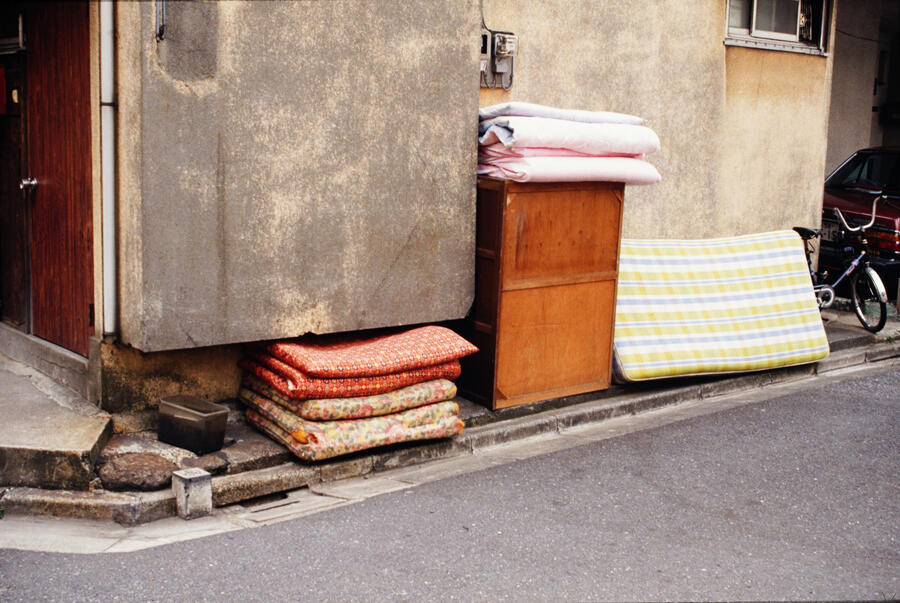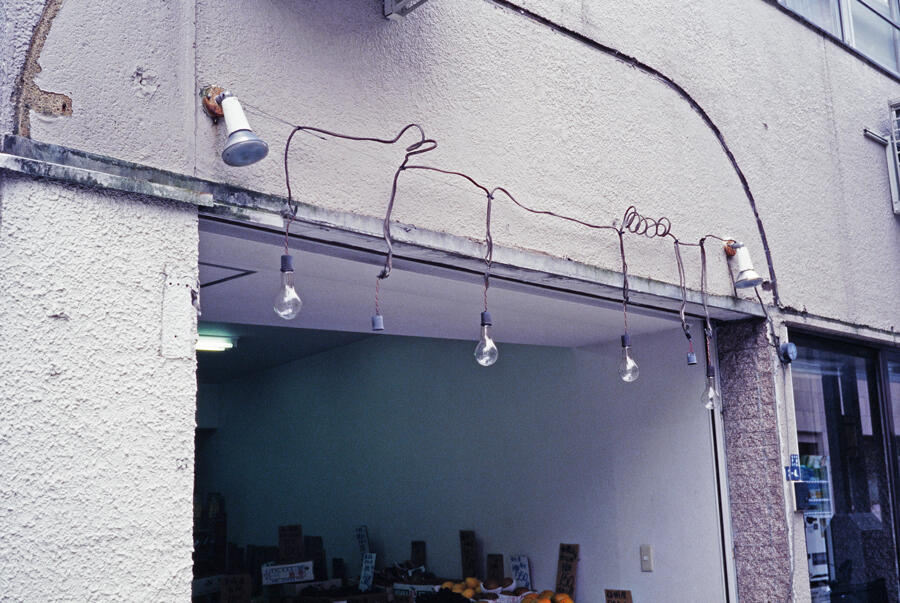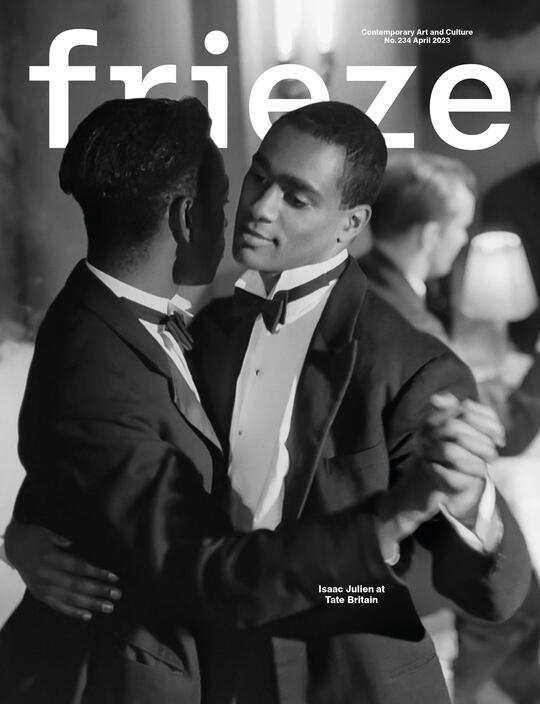Genpei Akasegawa’s Lost and Found Photographs
At SCAI Piramide, Tokyo, six artists have selected previously unseen photographs by Akasegawa that reflect the dizzying range of his work and his trenchant critique of capitalism
At SCAI Piramide, Tokyo, six artists have selected previously unseen photographs by Akasegawa that reflect the dizzying range of his work and his trenchant critique of capitalism

Best known internationally as a member of the influential, anti-art collective Hi-Red Center (1963–64), Genpei Akasegawa is one of the all-time trickster figures of Japanese art history. He self-destructed his conventional artistic career just as it was taking off when, in early 1963, he began a series of works modelled on the 1,000-yen note, which would lead to an overzealous police charge of creating imitation banknotes. Ultimately resulting in a conviction, the ensuing legal battle at one point saw the courtroom turned into a ‘happening’ with artists presenting their anti-artworks in testimony. Now considered a work in its own right, Model 1,000-Yen Note Incident (c. 1963–70) is emblematic of Akasegawa’s knack for turning the tables on institutional power structures.

Akasegawa – who was also a popular author, manga artist, camera enthusiast and educator at the Bigakko alternative art school – died in 2014 aged 77. But, in conjunction with the release of a new book of photographs, this exhibition at SCAI Piramide refreshes his legacy as an artist who pioneered ways of thinking about art under capitalism that still feel like trenchant critiques decades later.
Guest curator Keiko Toyoda, of Shiseido Gallery, invited six midcareer artists to select photographs from 40,000 unexhibited 35mm reversal film prints, shot between 1985 and 2006, which Akasegawa kept carefully filed in his study. Shuta Hasunuma, Zon Ito, Sachiko Kazama, Yuko Mohri, Yuta Nakamura and Yasuhiro Suzuki each chose around 20 prints, which have been installed, unframed, in simple grids accompanied by wall texts.

My first instinct is to view the exhibition through the lens of Akasegawa’s ‘Hyperart Thomasson’ project of the 1970s onward: photographs of functionless objects embedded and preserved in everyday spaces despite their lack of utility. One of Suzuki’s selections, for example, captures a mini staircase spanning the inside curve of a switchback on a gently sloping road. But two things become apparent upon extended viewing. First, that Akasegawa was a compulsive photographer, capturing everything from odd lines scored into a patch of green asphalt to table settings and cat portraits (in pre-meme-era 1993). Second, that the artists’ selections also read as reflections of their own practices.

Ito, known for his enigmatic works straddling illustration and abstraction, chooses snapshots of walls that recall Japanese tearoom aesthetics – varying in texture from brown stucco to weathered concrete and rusted metal – acknowledging Akasegawa’s book on the legendary 16th century tea master Sen no Rikyu, Mugon no zen’ei (The silent avant-garde, 1990). Kazama, whose manga-style woodblock prints satirize contemporary Japanese society through mash-ups of everyday scenes with, say, giant robot imagery, connects with Akasegawa’s eye for the absurd, as in a 1991 picture of a historic castle wrapped in blue-tarp scaffolding during restoration work. An inadvertent monument to the mundane, the image could just as likely have appeared in Akasegawa’s subversive manga Sakura Gahou (The Sakura Illustrated, 1970–71), which lampoons Japanese authoritarianism, as it could in a work by Kazama herself. Similarly, the shots of precariously hanging wires and hoses that recur in Mohri’s selection recall the bricolage forms of the artist’s kinetic Moré Moré (Leaky): Variations (2017–ongoing) installations, which are themselves inspired by photo-based fieldwork.

Uncoupled from the typical strictures of authorship, the photographs themselves become found objects of sorts. If not for the materiality of the prints, with their papery wrinkles and faded hues, a visit to the exhibition might feel more akin to scrolling through an Instagram feed. That’s no putdown of the artist, who, after all, turned his ‘hyperart’ into a participatory project, inviting readers to mail submissions of their own finds to the photo magazine Shashin Jidai. Akasegawa was decades ahead of the game in his examination of the relentless interplay between the singular and the superfluous under capitalism.
Genpei Akasegawa, ‘Particles of Art Scattered in Daily Life’, is on view at SCAI Piramide until 25 March
Main image: Genpei Akasegawa, untitled, c.1985–2006, 35mm reversal film print, 25 × 31 cm. Courtesy: the artist






















